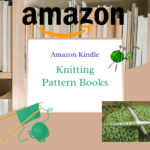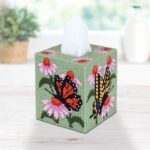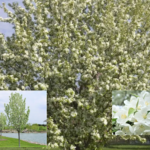Bald Cypress Tree
 Bald Cypress Tree Incredible Appeal Bald Cypress Tree Fast-Growing Soft, Green Foliage Cinnamon Red Fall Color Long-Lived Low Maintenance Tolerates Wet Soil Wildlife Species Trees Kids just love fun, soft ferny foliage of the wonderful native tree Bald Cypress |
The appeal of The Bald Cypress Tree it that is is a tall, long-lived trees are highly adaptable to most soils. It’s easy to create a strong focal point and gain welcome shade with this tree. Just plant this admirable and unique tree in your yard! Watch how fun it is for the kids who love the soft ferny foliage of the wonderful native tree Bald Cypress.
Bald Cypress Details
- Fast-Growing
- Soft, Green Foliage
- Cinnamon Red Fall Color
- Long-Lived
- Low Maintenance
- Tolerates Wet Soil
- Wildlife Species Trees
United States, this versatile tree can tolerate standing water. Perfect for low-lying areas, Rain Gardens and other big, open spaces, Bald Cypress tree gives decorative interest all year round.
The Bald Cypress is well-known for its love of wet areas, but it’s also adaptable to dry areas and city conditions. It can handle a wide variety of soil types and grows beautifully in either full sun or partial sun.
This is an easy care tree, and it is one of the oldest living trees in the world. The oldest known Bald Cypress Tree is found in North Carolina and is over 600 years old!
This post contains affiliate links and I may be compensated at no additional cost to the reader
Bald Cypress is also a fast-growing tree with 2.5 feet of growth expected each year. You’ll love the speedy way it rockets up to achieve lovely, refreshing shade for you and your family.
This tall tree is a rare deciduous conifer that offers a fall color display. First, the soft, short and feathery needles turn a gorgeous cinnamon-red for autumn. This is a tree that will certainly turn heads throughout the fall season.
Why is the Tree Called Bald?
When cooler weather comes around the tree drops its needles for the winter. This is where the nickname “Bald” comes from. Even in the winter, Bald Cypress gives visual interest. When its bright fall foliage has fallen, its attractive flared trunk has its moment to shine. The attractive silvery-gray bark has a wonderful shaggy texture that exfoliates to reveal noteworthy flashes of coppery, reddish-brown.
In spring, radiant, new green needles develop. The fern-like foliage is soft and flowing and grows into a graceful accent for your colorful summer plantings.
In the wild, many animals find shelter in Bald Cypress trees. Wild birds such as eagles love to nest in this tree. If grown in water, frogs and amphibians will use it as a habitat.
Now, you may not see much of that in suburbia, but your kids will love to play under the “pettable” branches. They’ll happily scramble over the fluted base and play in the cool, refreshing shade.
What a cool tree! Order yours today and get started with a tree that will shade generations to come.

How to Create a Beautiful Landscape Using the Bald Cypress
These tall, long-lived trees are highly adaptable to most soils. It’s a large scale tree with a pyramidal outline that would be a fantastic focal point for a large property, or big open spaces.

This fine-textured tree needs plenty of room to reach its maximum size. It grows in a pyramidal shape, and the slightly upturned, spreading branches are open and airy. If needed, prune any criss-crossing branches in early spring.
This tree is truly adaptable to most soils. It absolutely loves slightly acidic soil.
Give it medium moisture to establish for the first several growing seasons. Baby it a bit, you’ll be so glad you did.
You’ll love this lyrical tree. Generations of poets and writers have been inspired by it, and you will be, too. Order today!
Parks and municipalities like to include them in the mix of trees being planted to increase the diversity of the urban landscape. They’ll handle urban conditions, sun, partial shade, and a variety of soil types without missing a beat.
Give them plenty of room to reach their mature height and width. You’ll want to use these trees as an anchor in a large natural planting. Try underplanting them with Azaleas, Rhododendrons or Sumac shrubs.
Can be used by rivers and lake properties that have wet soils. This is a perfect tree to shade a dock or boat house.
Use this anywhere in a Rain Garden, including the basin or Zone 1 where periods of extended moisture can occur. It will filter runoff water from roofs or driveways beautifully.
If grown around ponds or standing water, the root system may eventually develop a few of those cute “knees” after several decades. If grown in drier conditions, it will not develop knees.
Learn more about the Bald Cypress Tree Here.
More Trees to Explore
Green Giant MagnoliaQuaking Aspen Tree
Royal Empress Tree
Ginkgo biloba
Sioux Crape Myrtle Tree
 Green Giant Arborvitae – Fast-Growing Green Giant Arborvitae Fast Growing Great for Privacy Easy Care Soft Evergreen Foliage Drought Tolerant Once Established The Green Giant Arborvitae (Thuja standishii x plicata ‘Green Giant’) is also called Western Red Cedar. |
 Emerald Green Arborvitae – Popular Emerald Green Arborvitae Hardy Formal Evergreen Grows 1-2 Feet Per Year! Can Tolerate Urban Conditions Upright Narrow Pyramidal Form Dense, Soft Foliage Quick Screen or Hedge Wildlife Tree Easy Care Privacy Narrow Form Fits Perfectly |
- How to Crochet a Scarf – Learn the Steps to Crochet an Easy Scarf

- Free Preview of My Amazon Kindle Knitting Books

- Best Shoes to Wear if You Have Back Pain

- How to Add a Little Spring with The Cosmos Plastic Canvas Tissue Box Cover Pattern Kit

- Embracing Perfection: The Allure of White Spring Snow Crabapple Blossoms



